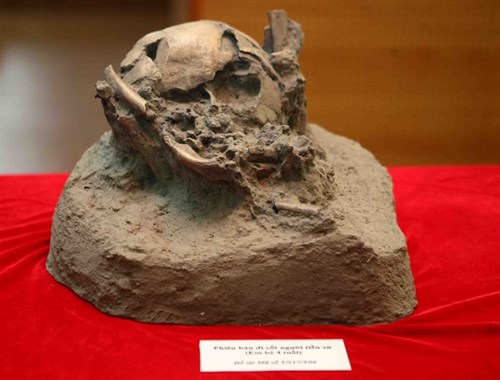A report filed earlier this month to demonstrate the Krong No volcanic park in Dak Nong meets UNESCO criteria for recognition as a global geopark also revealed that the corpse of a young boy had been discovered in one of the area’s many caves.
    |
 |
|
A copy of the remains of a young boy found in a volcanic cave |
Museum director Nguyen Trung Minh’s recent announcement said the excavation had uncovered two additional corpses, all of which date back nearly 7,000 years. Pieces of ceramics, stone and animal bones were also found in the cave.
This finding is the first of its kind in the area, Minh said, adding “it is a shocking discovery – the Krong No volcanic cave system is one of the largest of its kind, and the only one in Southeast Asia where we have found traces of prehistoric people.”
These remains also bolster the site’s case for recognition as a UNESCO site.
Professor Nguyen Lan Cuong, General Secretary of the Vietnam Archaeology Association, said the three corpses included two adults and a child of about four years old.
The bodies were found around one meter below the surface of the cave, surrounded by trace remains of ten total corpses.
The finding opens a new chapter in the study of Vietnam’s anthropology.
Scientists have also found traces of fires and rubbish, suggesting each cave had a designated purpose. Some could have served as long-term residences while others were merely temporary hunting camps.
The discovery happened thanks to a research project, chaired by La The Phuc of the National Museum of Nature, designed to establish a museum at Krong No on the cave heritage of the central highlands.
The museum will coordinate with experts in the coming months to continue research into the prehistoric people of the red basalt area. Scientists will propose areas for further study on the topic of volcanic cave archaeology in Southeast Asia.
The cave system, which stretches some 25 kilometers, was first discovered in 2007. It demonstrates a structure typical of caves formed by volcanic activity, and also contains traces of vegetables from millions of years ago.
Source: VNA